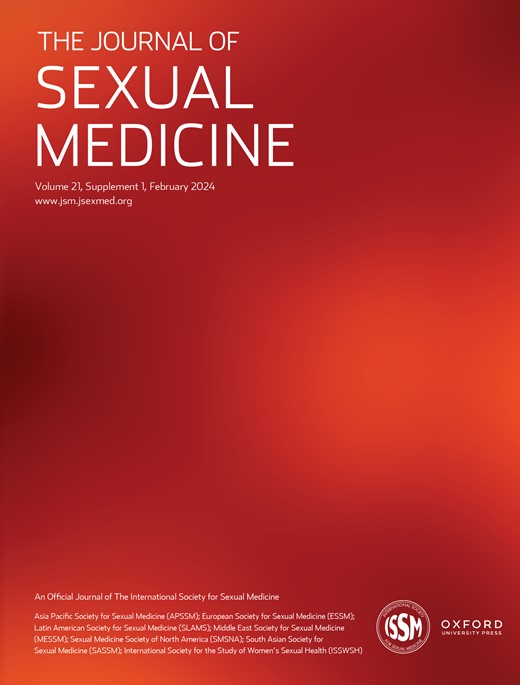madman
Super Moderator

(238) Changing Landscape of Erectile Dysfunction: Shift in Risk Factors and Presentation Patterns
AbstractIntroduction. Roughly 52% of men over the age of 40 have ED. However, our understanding of ED risk factors is constantly evolving.Objective. The aim of
Abstract
Introduction
Roughly 52% of men over the age of 40 have ED. However, our understanding of ED risk factors is constantly evolving.
Objective
The aim of this study is to provide a contemporary update of risk factors and characteristics of men presenting with erectile dysfunction (ED).
Methods
A retrospective review identified 576 men presenting to our tertiary academic center between 2009 and 2022 with the chief complaint of ED. Their medical charts were reviewed and analyzed for demographic information and treatment outcomes.
Results
The mean age of the cohort was 64.3 years (S.D. = 15) with initial testosterone levels of 310.5 (IQR = 231.8-437.2). The median symptom duration at presentation was 2 (IQR = 1-5) years, but more than half had already tried PDE5i therapy in the past (260/452, 57.5%, 95% CI (52.8-62.1%)). Men in the cohort had higher than national rates of hypertension (35.6%, 95% CI = 31.3-40.1%) and hyperlipidemia (30.5%, 95% CI = 26.4-34.0%) but the percentage of patients with diabetes was on par with national rates (14.7%, 95% CI = 11.6-18.2%). Men with Peyronie’s disease constituted 14.6% (95% CI = 11.5-18.2%) of the cohort (66/453) and 23 of those men had a radical prostatectomy (4.6%). Over half of the patients (310/576, 53.8%, 95% CI = 42.2-65.2%) were started on PDE5i oral therapy, of whom 61% (189/310) of men were satisfied with the effect.
Conclusions
Patients with ED are known to be more likely to have comorbid chronic conditions such as hypertension, diabetes, and dyslipidemia. Prior studies have demonstrated that in men presenting with ED, 42% had hypertension, 20% had diabetes, and 42% had hyperlipidemia. However, our study reveals a lower rate of these risk factors than previously shown. In our study, men were waiting approximately 2 years before they sought treatment, which is 2 years earlier than prior literature. Finally, over half of the men had previously used a PDE5i upon presentation, which suggests that many men are presenting with more advanced ED.












